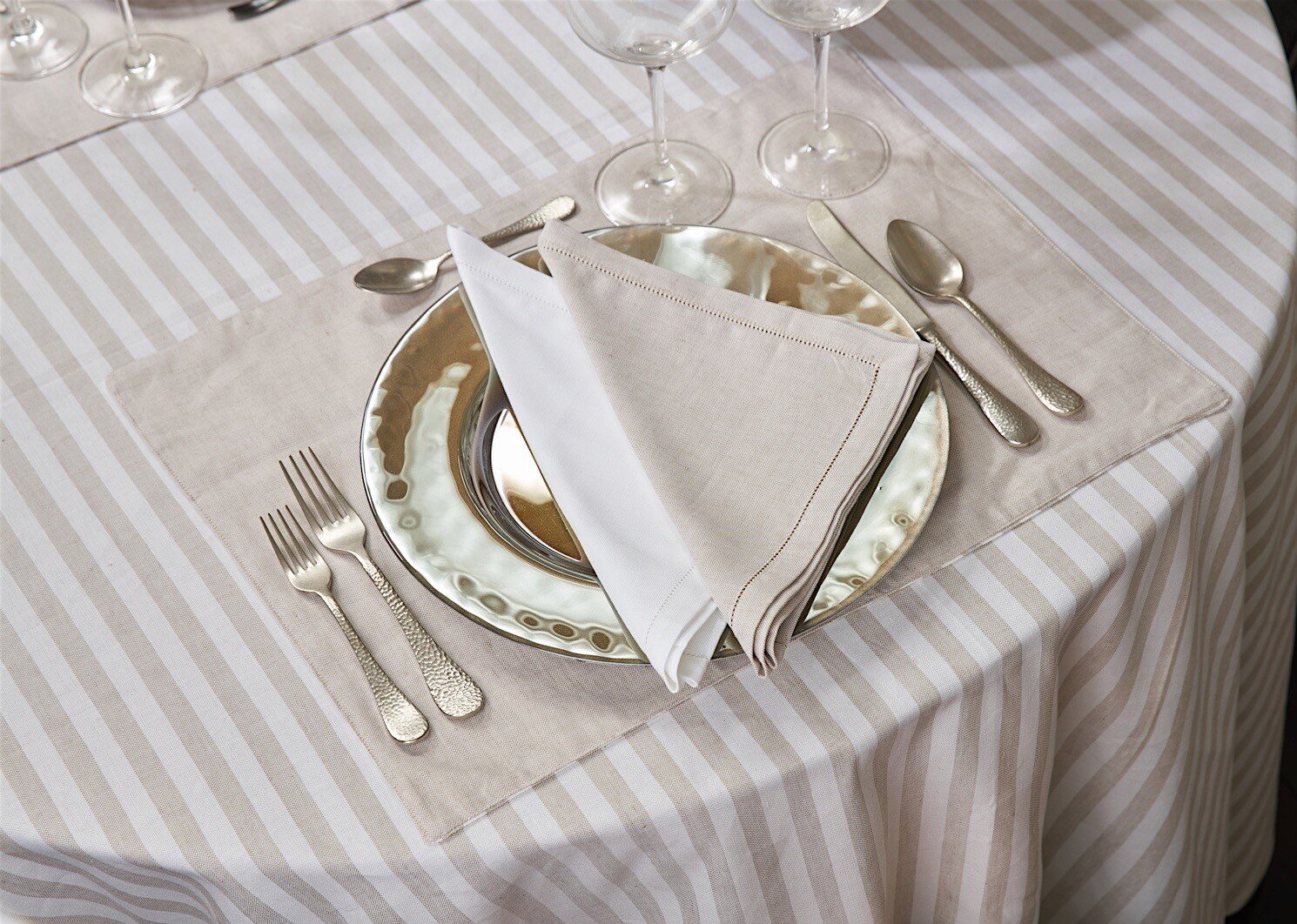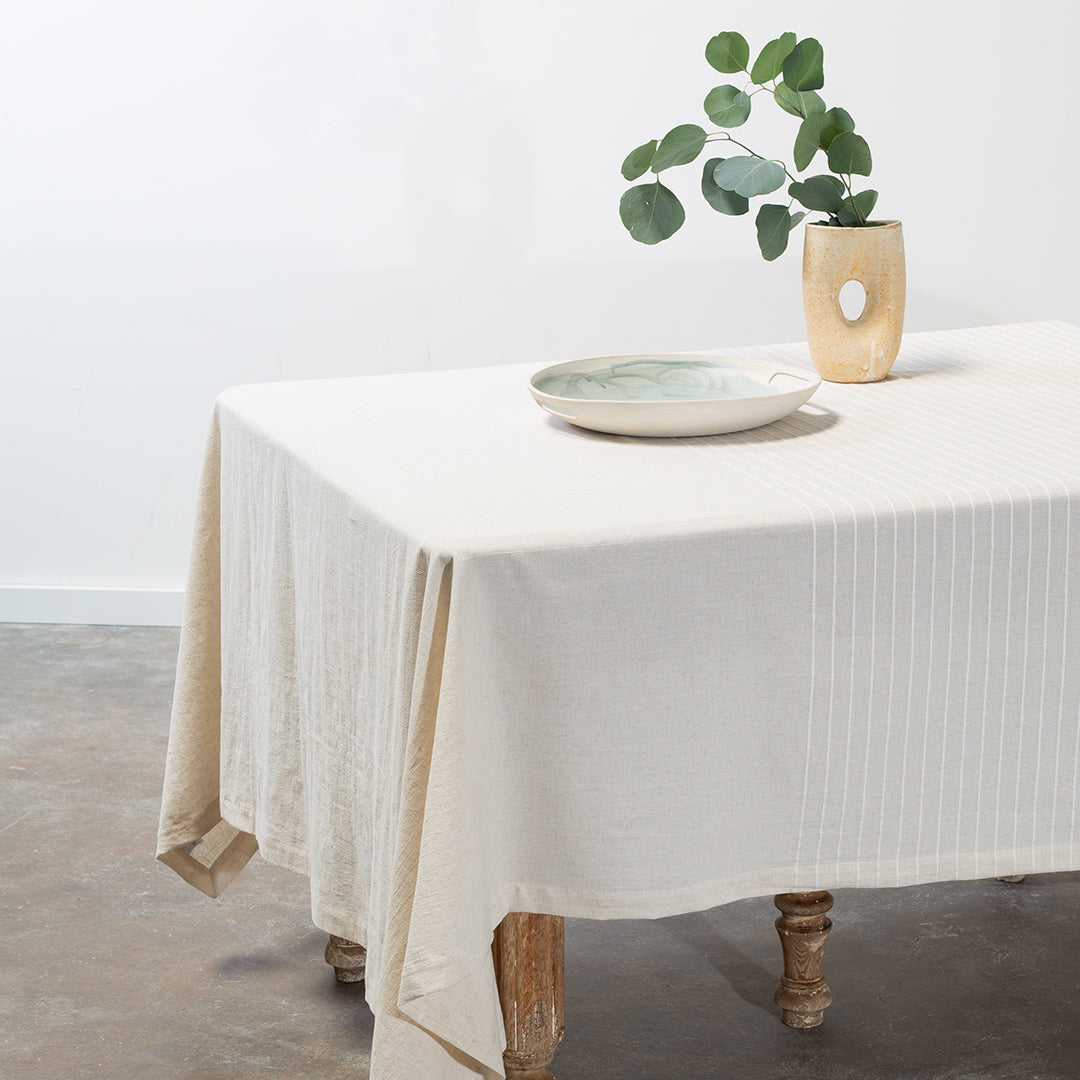How to Pick the Perfect Table Runner for Your Dining Table
Linen Textile Technologies: Exploring Modern Trends and Creative Applications in Design and Textile Market
In the world of textile innovations, linen has arised as a classic yet functional product that proceeds to astound developers and fanatics alike. With a rich history deeply intertwined with craftsmanship and elegance, linen textile is experiencing a resurgence in the modern age. From lasting manufacturing methods to advanced weaving innovations, the development of linen is improving the landscape of the textile industry. As we look into the realms of imaginative layout applications and the appearance of bed linen blends and crossbreed textiles, a brand-new chapter unfolds in which bed linen's duty in future textile developments takes spotlight.
Sustainable Practices in Linen Production
Lasting methods in linen manufacturing have come to be progressively important in the textile sector's efforts to decrease environmental impact and advertise ethical sourcing techniques. Linen, an all-natural fiber obtained from the flax plant, offers a series of benefits such as sturdiness, breathability, and biodegradability. However, typical methods of bed linen manufacturing can involve substantial water consumption, pesticide usage, and energy-intensive processes.
To address these difficulties, several textile makers are taking on lasting practices throughout the linen production procedure. This consists of sourcing flax from organic ranches that prevent unsafe pesticides and chemicals, applying water-efficient retting strategies to extract fibers from the flax stalks, and using environmentally friendly dyes and surfaces. In addition, some companies are investing in renewable resource sources to power their manufacturing centers and reducing waste with recycling and upcycling efforts.
Technical Innovations in Bed Linen Weaving
With the growing emphasis on lasting techniques in bed linen manufacturing, the fabric sector is currently witnessing a surge in technological improvements especially targeted at revolutionizing the art of linen weaving. These developments are reshaping the way linen fabrics are produced, providing boosted effectiveness, high quality, and creative thinking in weaving strategies.
Among the crucial technological developments in bed linen weaving is the assimilation of electronic looms. These advanced looms are outfitted with software application that enables elaborate and complicated designs to be woven with precision. By digitizing the weaving process, manufacturers can achieve better uniformity and accuracy in their linen fabrics.
Additionally, advancements in thread spinning modern technology have enabled the manufacturing of finer and more durable bed linen yarns - table cloths. This results in softer and smoother bed linen materials that retain their top quality also after multiple uses and washes
In addition, the development of green dyeing procedures and finishes for bed linen materials is gaining grip. These lasting techniques not only lower the environmental impact yet also deal with the boosting customer demand for morally produced fabrics.
Creative Design Applications for Bed Linen
Cutting-edge artistic techniques are significantly shaping the imaginative design applications for linen in the textile market. Bed linen's all-natural aesthetic appeal and capability to blend with various other textiles make it a favored choice for creating special garments and devices that provide to the environmentally conscious consumer.
Furthermore, developers are trying out with linen in home decoration, using its sturdy and breathable nature to craft stylish furnishings such as curtains, bed linen, and upholstery. The structure and drape of linen bring a sense of elegance and comfort to interior spaces, including a touch of sophistication to modern homes.

Bed Linen Blends and Crossbreed Fabrics

Hybrid materials, on the other hand, take the principle of blending an action additionally by incorporating added aspects such as metallic strings, recycled materials, or conductive fibers. These ingenious fabrics not only expand the layout possibilities yet likewise present practical facets like conductivity, antimicrobial buildings, or improved durability. Crossbreed textiles are progressively being utilized in different sectors, including style, interior decoration, and technological textiles, where the need for multifunctional products is on the surge.
Linen's Function in Future Textile Innovations

In the world of future fabric innovations, linen is expected to be an essential gamer in the advancement of innovative useful fabrics. Designers and researchers are exploring methods to improve bed linen's inherent qualities through technological advancements, such as incorporating smart textiles, nanotechnology, and performance finishes. These developments aim to elevate linen's performance attributes, making it suitable for a broader series of applications, from activewear to safety apparel.
Furthermore, the combination of linen with other all-natural or artificial fibers opens limitless opportunities for producing novel textiles with unique residential or commercial properties and performances. By leveraging linen's qualities and checking out innovative blends, the textile sector is positioned to introduce exciting growths view publisher site that deal with progressing consumer needs and sustainability needs.
Final Thought
To conclude, the expedition of lasting methods, technological advancements, imaginative style applications, linen blends, and its duty in future textile innovations highlight the continual development of linen textile in the contemporary design and fabric industry. With a concentrate on innovation and creative thinking, the convenience and green nature of linen make it a valuable product for producers and developers alike, leading the way for additional growths and developments in the area of textiles.
As we delve right into the worlds of innovative layout applications and the development of bed linen blends and hybrid materials, a new hop over to here chapter unfolds in which bed linen's role in future fabric developments takes facility phase.
Discovering the combination of bed linen with various other materials has actually led to the emergence of ingenious blends and crossbreed textiles in the contemporary fabric sector. Linen blends use an unique combination of the features of linen with those of various other fibers, resulting in textiles that possess improved residential or commercial properties such as raised resilience, enhanced draping, and lowered wrinkling.The evolution of linen blends and hybrid textiles has actually established the stage for Linen to play a critical duty in driving future textile advancements.In the world of future fabric technologies, linen is expected to be an essential player in the advancement of sophisticated useful textiles.